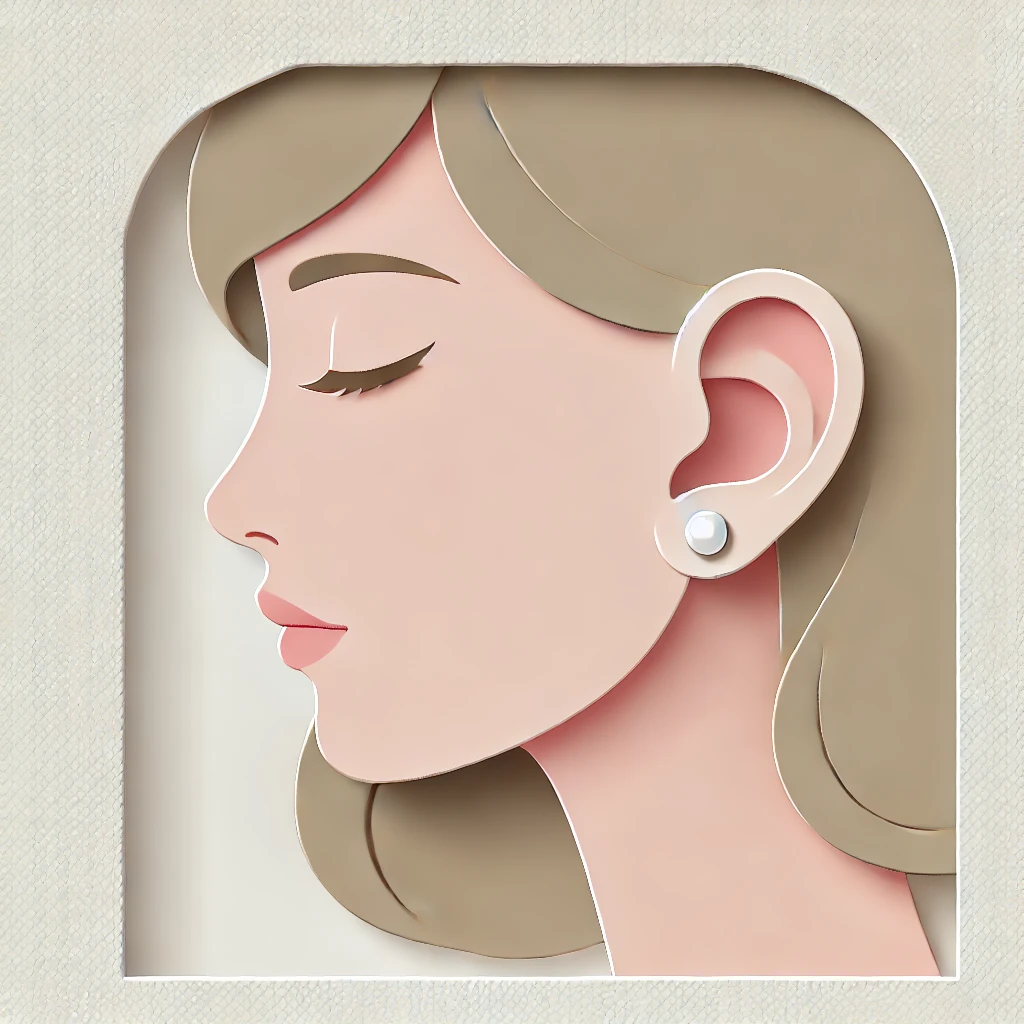“Otoplasty” refers to plastic surgery performed to correct prominent ears by re-shaping the ear folds and setting the ears closer to the head, in a natural and subtle manner. The aim of surgery is to create a very natural, “not operated on” appearance of the ears.
Most commonly, patients with prominent ears have two specific features. Firstly, the angle of the ear from the skull is increased, and secondly, the edge of the ear does not have the normal curled shape. Both these features contribute to the appearance, and both are specifically addressed at surgery.
Many patients with prominent ears have been concerned with the appearance of their ears since childhood, and indeed this corrective surgery is often done in children before they enter high school, after the ears have fully developed. Doing the surgery in childhood can avoid years of schoolyard taunts, and as adults allow you to wear your hair short or pulled back, which has often been avoided. This condition has a hereditary component to it, often running in families, with parents bringing their children for surgery, which they themselves had, or wished they had performed.
Meet your Surgeon

Dr Robert Knight
Meet your Surgeon
Education and Training:
- Attended medical school in South Africa, and trained at the internationally renowned Baragwanath Hospital
- Awarded a Cyanamid Pharmaceutical Scholarship, the Medical Students Council Award and the Graham Wilkinson Medal
- Member of the Royal College of Surgeons of Edinburgh
- Awarded the LGI cardiothoracic prize and presented at several conferences in London, Stockholm and Cologne
FAQ
How can prominent ear correction help me?
Otoplasty places ears in a position that is more in balance and harmonious with your face. Usually people select this surgery when they feel that their ears protrude in a significant manner. Benefits for you include:
- Improved self confidence and self esteem
- Newfound freedom in wearing your hair
- A more balanced facial appearance
Your otoplasty consultation: What to expect
A consultation with your Pure Aesthetics specialist plastic surgeon, Dr Robert Knight, is the first step when you are considering surgery and will take approximately 45 minutes. You should frankly discuss your goals and expectations about looking and feeling better after surgery.
During the consultation, your surgeon will ask you a variety of questions covering everything from your current health situation to details about the physical outcomes you desire. Be prepared to talk about current medications, allergies and any past or current medical treatments.
You will receive a detailed and thorough examination of your ears and how they relate to your face as a whole. During your consultation, your surgeon will carefully assess you for problems with the shapes, differences and sizes of your ears to establish your tailored surgery plan. Your plastic surgeon will then go closely go over your options and recommendations.
The recovery process and any potential complications that could arise will also be discussed. At any time, you are encouraged to ask any questions that you may have.

Prominent ear surgery procedure: What does otoplasty involve?
An otoplasty should be performed by a specialist plastic surgeon for permanent and natural treatment of protruding ears. The operation takes place in a hospital or day surgery, usually under general anaesthetic, as day surgery. The particular surgical technique that your specialist plastic surgeon recommends will depend on the specific factors associated with your ears. In most cases, otoplasty involves a small incision behind the ear through which the cartilage is accessed and modified. Various methods can be used to reshape the cartilage depending on the patients’ needs and severity of their condition. Often internal sutures are used.
Cosmetic ear surgery involves making a small incision behind the ear at the skin’s fold against the head. Through this access, the cartilage is reshaped and repositioned into a more natural position using the method best suited to each individual patient’s requirements and severity of their condition. For example, your plastic surgeon might use multiple shallow cuts, or ‘scoring’; ‘trim’ the cartilage to re-contour the ears’ shape, or use internal sutures to position the ear closer to the head.
In some cases, when correcting prominent or large ears, a small amount of cartilage is removed from the bowl of the ear, which is known as ‘conchal fossa reduction’. This manoeuvre moves the entire ear to sit closer towards the head.
Your Pure Aesthetics cosmetic plastic surgeon is careful to create a smooth and natural fold to the ear, rather than a sharp crease that flattens it to the side of the head. The right degree of correction for a natural result from your ear surgery is determined during consultation with your surgeon. Here you will be shown ear surgery before and after photos of past patients with similar conditions, to indicate the results you can expect.
Will I need to be hospitalised for the procedure?
Otoplasty is performed in a day surgery or hospital, usually under general anaesthetic. It is an outpatient procedure, meaning you get to go home the same day. All surgeries are performed in fully accredited facilities ensuring your safety.
How long does corrective ear surgery take?
Generally, otoplasty takes up to two-and-a-half hours. However, the time taken for every otoplasty operation varies because of individual patients’ subtle differences in ear projection, shape and size.
Fine adjustments to fix ear asymmetry as well as prominence are common during corrective ear surgery, making it necessary for your plastic surgeon to carefully tailor your otoplasty for a natural and balanced result that is in harmony with your facial features.
What is recovery like after prominent ear surgery?
Advancements in anaesthesia over recent years has meant more comfort for patients – less pain with minimal post operative sedation and nausea and a quick recovery to “feeling normal.” The anaesthetists in our team are highly skilled and experienced in modern techniques and devoted to keeping you comfortable. Local anaesthetic injected once you are asleep continues to keep the ears pain-free for several hours after your cosmetic ear surgery. A head bandage like a turban is worn for about a week after prominent ear surgery. Discomfort after prominent ear surgery is usually treated with simple pain medications.
Swelling and bruising and is normal following ear surgery and takes a few weeks to diminish. You will be advised to wear a wide headband over your ears during sleep, to protect your ears during early recovery, and to avoid strenuous exercise or heaving lifting for at least 3 weeks after otoplasty. Apart from these inconveniences, recovery is usually very pain free and complications are uncommon.
Post Operative instructions advised by your surgeon must be followed to ensure recovery is not compromised.
What scarring is there from ear surgery?
The incision made during otoplasty is concealed behind your ears, at the fold of the skin, which means otoplasty scars are not visible to anyone looking at your face. Occasionally additional scars are deep in the bowl to the front of the ear which are virtually imperceptible.
Otoplasty results: What and when?
Once the head bandages are removed, you will see an immediate results, however the full results are usually seen after 6 weeks, once the swelling and bruising has subsided.
Before and after photos of cosmetic ear surgery results of our patients will be shown to you in your consultation. For privacy reasons we do not post these in our gallery.
When can I resume day-to-day activities after ear surgery?
Most people are back at work a few days after surgery. Normal activities can usually be resumed after one week. Strenuous activity and exercise should be avoided for at least 3 weeks.
What complications can arise from cosmetic ear surgery?
As with any surgical procedure, there are potential risks and complications. These include:
- Infection
- Bruising, bleeding, heamotoma formation
- Scarring
- Anaesthetic problems
- Allergy
- Deep Vein thrombosis
- Pain
Risks and complications specific to Otoplasty include:
- Asymmetrical ears
- Re-protrusion of one or both of the ears
- Fluid accumulation in the inner ear leading to nausea and loss of balance
- Altered sensation around the incision site
The potential risks and complications of the surgery will be discussed with you in detail at your preoperative consultations.

Is there non-surgical treatment for pinning back ears?
Permanent correction for protruding ears is only possible with surgery, to reshape and reposition the ear cartilage into a more natural position, where it will remain for life. Non-surgical ‘pinning back’ ears, which generally refers to measures to push the ears back using tape or other devices that need to be worn for a lengthy period of time are only effective in newborn babies, and otherwise do not guarantee long-term results.
An otoplasty is safe plastic surgery to correct prominent ears that leaves no visible scar. It is a popular and common way for people who suffer from large or imbalanced ears to benefit with better confidence from an improved appearance.
What else should I consider before having otoplasty surgery?
Emotional stability is the primary factor to be considered before any aesthetic surgery is performed. It is mostly your mental attitude and realistic expectations that determines a successful outcome. Otoplasty can improve your appearance and renew your self-confidence; the rest is entirely up to you.
To understand what is reasonable to expect from the surgery, it is a good idea to look at before and after photos. This will give you a good perspective of what results other patients have achieved through our plastic surgeon’s work.
Before deciding to have this procedure, you may want to consider your planning for the healing period. Will you need help or assistance from others?
Do you have any more questions?
Please feel free to contact us with any additional questions that you might have about this procedure. Our team will be happy to address any concerns that you may have.
Before & After
To protect the privacy of our patients, protruding ears (otoplasty) before and after cases can be seen in our office during your consultation.





